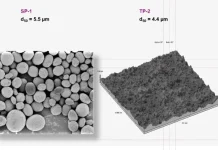Many definitions for the word “print” include “impress” or “impression.” While the artistic side of UV printing has always amazed me, I am more impressed with functional products, such as sensors and printed electronics that can be manufactured with UV printing.
If the title to Shania Twain’s song “That Don’t Impress Me Much” still comes to mind when you think of UV printing, I suggest reading Andy MacDougall’s recent article in Screen Printing magazine1. Andy is a well-respected screenprinter and industry author who explores how screen printing has produced a variety of medical and electronic products, including those used to help fight COVID-19.
Part One of this column looks at common denominators for maintaining process control among the different UV print technologies. Part Two is a roundtable discussion with an all-star team from Nazdar.
Part One: 5S For UV Print Process Control
Companies around the world have adopted “5S” Lean (Kaizen) Manufacturing with its core principles of Sort, Straighten, Sustain, Shine and Standardize. What if we modify the 5S principles so they can be used for process control in UV print and other UV applications?
1. Specifications (Ink)
Most ink formulators provide cure targets that serve as starting points that require additional work for your application, equipment and process. The quality of these specifications varies from excellent to poor. Look for specifications that include:
- Coating thickness
- Spectral output(s) that will best cure the ink (i.e., mercury, mercury-gallium 395 nm LED)
- Starting points for irradiance (W/cm2) and energy density (J/cm2) values
- Details [brand, band range (nm-nm), settings] on the instrument used to generate the values
- A specification that states a minimum of 375 mJ/cm2 and 550 mW/cm2 of UVA energy as measured with an EIT Power Puck II, UVA (320 to 390 nm) band with the instrument sampling at 128 Hz is more descriptive than just stating 375 mJ/cm2. 375 mJ/cm2 of what? Measured on what band and instrument?
- Be careful of specifications that have consumed or applied electrical power values (i.e., 600 Watts or 200 Watts per inch). Do not confuse the consumed electrical power (W/cm) with the amount of UV (W/cm2) reaching the cure surface.
2. Source (UV Equipment)
Hand-me-down clothes are great for a family with fast-growing kids, but a hand-me-down UV source that was in your family (facility) may not be the best choice for a new project. Will the source (microwave, arc, LED) deliver the right spectral content to the ink or coating at the needed irradiance and energy density levels? Your power supply, power setting (50%, 100%), UV generating head, reflectors, distance, cooling and other design factors will dictate the achievable UV output power levels (W/cm2) that can be delivered to the ink or coating. This expected output will allow you to make sure that the instrument dynamic range or scale also is matched to the system.
3. Suitability (Instrument)
This grouping of these “parameters” helps determine if the instrument suits your process:
- Safety: Will your process allow the instrument to be inserted and removed safely without endangering staff, or damaging the press and/or the instrument?
- Space (size): How much space do you have in your system? This is one of the first questions we ask to determine if an instrument will work in for your application.
- Spectral Response: Does your radiometer have a response that is matched to the spectral output of your system?
- Scale (dynamic range): Is your instrument scale matched to the source output?
- Speed (sample rate): How fast will you collect data? Information collected on a digital printer running at 400 feet (122 meters) per minute needs a faster effective sample rate than information collected on a conveyor running at 20 feet (6 meters) per minute. Make sure your instrument has an adequate sample rate for repeatable and accurate results.
4. Service
The word “service” as used in this section includes preventive maintenance, ongoing care and – less frequent but equally important – service of your UV source, press/equipment and measurement instrument.
- UV Source: Work with your source manufacturer to establish a preventive maintenance and ongoing care schedule that includes regular cleaning and replacement of consumable items such as bulbs, filters and reflectors based on the source type. Less frequent service can include checks and adjustments to the power supply, cooling (air/water) system, shutters, lamp components, quartz windows and anything else suggested by the manufacturer.
- Press/Equipment: Work with your suppliers to determine the proper schedule and preventive maintenance, ongoing care and service items to address based on your equipment.
- Measurement Instrument: Follow the manufacturer’s recommendations for the daily care of your radiometer including the cleaning of the optics. Get the radiometer serviced regularly or if the unit is damaged during use.
5. Standardize
Decide as a company how you want to measure, record, save and analyze your UV sources.
- Are adjustable instrument settings documented as to how they should be set?
- Have you standardized data collection parameters in terms of speed, power setting, source height and location under the source?
- Are standards being followed by all operators?
- Are you recording both Watts and Joules?
- What UV band(s) do you need to monitor?
- How are the data stored?
- Do you have a process window established?
- What happens if the readings are outside of your window?
Part One Parting Thought:
The 5S principles in Part One covered ink, equipment, instrument, service and collection of data from an ideal perspective. The more of these principles that are adopted, the greater the chance of UV curing success. Follow the 5 S’s and combine them with the 7 P’s: Proper Prior Planning Prevents Poor Print Performance.
References
https://screenprintingmag.com/screen-printers-fight-against-covid-19/
 Jim Raymont
Jim Raymont
Director of Sales
EIT LLC
jraymont@eit.com
Part Two: Real-World Roundtable Discussion – UV Inks and UV Curing
Editor’s Note: The following is an excerpt from an in-depth interview with Nazdar’s team. The full interview can be found at www.uvebtechnology.com and will be featured in the September UV+EB Technology ENews.
Nazdar team members participated in a real-world roundtable discussion on UV inks and UV curing. This team has 163 years of ink, formulation, print and troubleshooting experience, and when they talk, I listen. Our discussion and their answers are reflected below.
1. In Part One, Specifications (Ink) was the first 5S principle listed. How does Nazdar communicate cure specifications?
We almost exclusively use technical data sheets (TDS), which are posted on the website. The TDS for our ink lines designed for curing with broadband (mercury) sources provide very detailed specifications. The TDS for our ink lines designed for LED curing are continuously evolving and getting more detailed as LED inks are developed. We refer to manufacturer Wattage ratings, band (wavelength) specifications and output energy recommended to cure an ink line. Just as it did for broadband (mercury) applications, it has taken time for both education and radiometers for LED cure applications to be widely available and accepted.
We initially communicated inkjet curing values by using general UVA values from our UV screen ink products (i.e., irradiance of 600 mW/cm² and energy density of 225 to 250 mJ/cm²). Users need to keep in mind that multiple passes are required with inkjet printing to obtain the desired energy density values.
We will work from the general to the specific for customer-based variables such as the photoinitiator package. For example, we may revise a target UVA exposure to a minimum of 423 mW/cm² and 25 to 35 mJ/cm² for each pass of the UV source. This assumes that the customer has a radiometer with a fast enough sample rate to get the values from a single pass. Communication and establishing a relationship are key.
2. What challenges have you had with a customers had with UV sources when trying to meet specifications?
This answer depends on the type of print application.
For broadband (mercury) -based screen print applications:
- Many screen printers have trouble meeting our minimum published requirements, even though they have some buffer built into them.
- Customers make do with multiple lamps, slower speeds, lesser ink deposit or live with under-cured ink.
- There are multiple design considerations that go into a UV system to allow it produce stable, consistent UV energy. Screen printers are resourceful and self-reliant, and some have built their own curing units with a predictable wide range of results.
- Other challenges we face on a regular basis include:
- UV source-formulation mismatch (do not use “additive/doped” lamps to cure overprint clears)
- Availability of clean and consistent applied electrical power
- Proper preventive maintenance of the system, including cleanliness of lamp, reflector and cooling system; age and condition of the lamp; positioning of the lamp in relation to the reflector; height of lamp/reflector assembly above the substrate; condition of electrical components – capacitors; accuracy/repeatability of conveyor or scanning speed; and consistent deposit of ink.
For broadband (mercury) -based flexography applications:
- The process is mature, and customers seem to be more familiar with the process and required maintenance.
- When we do see problems, we look at the age of the bulbs, which can manifest with low cure at the edges of a wider print.
- Deeper through-cure can be a challenge when curing higher film thickness (e.g., heavier whites and coatings), particularly as speeds increase.
- Occasionally, very porous substrates contribute to cure challenges due to light scattering.
For LED-based applications:
- LEDs can offer several advantages over broadband sources. These include better through-cure, higher ink film thicknesses, higher process speeds, less heat, lower energy cost-of-use, longer life and instant-on.
- With nearly every application, what can be done with UV also can be done as well or better with an LED.
- LED is a newer technology, especially in narrow-web applications, and there are unknowns compared to broadband technology.
- Not all LEDs are created equal. We have seen “inexpensive” LED arrays provide acceptable cure performance, at least initially, before degrading rapidly in their output and ability to cure.
- With LEDs, the peak irradiance delivered (W/cm2) often is less critical than energy density (dose) delivered (J/cm2).
For inkjet applications:
- Many of the other items already mentioned apply to inkjet applications.
- Additional challenges with inkjet applications include:
- Lack of UV measurement instruments (radiometers) by customers, field service technicians and even manufacturers that do not own or use them. They incorrectly believe that if the “light” is “on,” then the system is OK to use.
- Lack of a preventive maintenance program and schedule. This includes a lack of training, documented procedures and a backup plan when an employee is absent or leaves the company.
- Aggressive production schedule in which no time is set aside for preventive maintenance.
- Lack of knowledge and understanding of how the system works. What needs to be replaced beyond normal preventive maintenance items? How often? How does the applied electrical power impact the UV output on both broadband and LED sources?
3. What is the process when customers contact you and state, “My ink is not curing”?
Customers often confuse an “adhesion” issue with an “ink” issue. They use an ink not designed for a particular substrate and then say the ink is not curing when it’s just not adhering. Adhesion also can be related to the surface treatment (or lack thereof) of the substate.
When we ask if the customer measured the UV conditions (irradiance, W/cm2 and energy density, J/cm2), most times we get a “no.” We go over items that need to be maintained on their UV systems. This includes the last date of maintenance and when cleaning, rotation and/or replacement last took place on the reflectors, bulbs and other items, like quartz plates.
Other questions we ask to clarify the “ink issue” include:
- Is the ink agitated or has it separated (i.e., whites)?
- Did you install the right ink?
- Do you have the correct lamps in the machine? This includes verifying the lamp type (mercury vs. mercury-gallium) and verifying if a replacement third-party lamp purchased for $5 less performs as expected.
- Is your color management controlled?
- Is your ink film too thick? If so, print a gradation and see where the adhesion fails.
- We sometimes ask a customer to add a significant amount of a mixing clear, probably 20% by weight, and make a print using the same print setup. Is it curing now? If so, the problem is a lack of UV energy, and preventive maintenance needs to be done.
4. How often is there an issue with something other than the ink? What type of issue?
Ink commonly is blamed but rarely is the root cause. The ink acts as the ultimate transmitter of problems in the process. Issues that we commonly see include operator error; misguidance on the material choices or quality (wrong ink for the application, substate-ink mismatch and the use of incorrect, old and/or low-quality media/substrate); poorly maintained equipment, training failures and maintenance challenges; or unrealistic expectations.
Other root cause examples that can appear as an “ink issue” include:
- Substrate receptivity (surface energy) problems that appear as low cure through adhesion tests
- Banding/gear marks from mechanical sources that appear as mottled/striated areas of vignettes or halftones
- Hard halftone edges resulting from incorrect plate cleaning processes
- Bridged/dirty halftone areas due to the use of excessive anilox volume
- Low coating gloss, white opacity or color strength from insufficient anilox volume
Early and often: One of the biggest challenges we face is when our customers do not involve us early in the process when considering a new application. It is much easier to meet early in the process to discuss the targets and formulate an effective solution that will give us the best opportunity for success.
Thanks to the Nazdar team. What started out as a few questions turned into an informative interview with practical real-world advice.
Travis Barcelona, Inkjet Product Development Manager, tbarcelona@nazdar.com
Steve Noland, Technical Service Representative, snoland@nazdar.com
Tony Parsons, OEM Technical Services Representative, tparsons@nazdar.com
Russ Petty, R&D Screen Lab Manager, rpetty@nazdar.com
Bruce Ridge, Director Technical Service, bridge@nazdar.com





